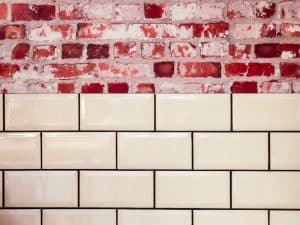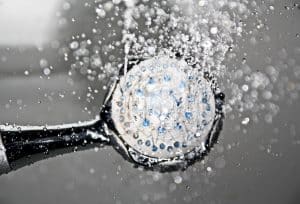Essential Tips for Spotting Water Damage Underneath Your Shower Tiles
Water damage beneath shower tiles is not just a superficial issue affecting the aesthetic appeal of your bathroom; it can be an indicator of deeper structural problems. Identifying water damage early can save homeowners significant repair costs and prevent potential health issues. This article offers essential insights and tips on recognizing the signs of water damage under shower tiles and outlines why timely intervention is crucial.

Common Signs of Water Damage Under Shower Tiles
A. Cracked or Lose Tiles
Cracked or loose tiles are often the earliest indicators of water damage. When water seeps into the substrate, it compromises the adhesive bond that holds the tiles in place, causing them to lift or crack. Regularly inspect your shower tiles for any signs of cracking or loosening. If you detect such changes, it may be time to look deeper into the cause to prevent further damage.
B. Mold and Mildew Growth
Mold and mildew thrive in moist environments, making your shower an ideal breeding ground if water has accumulated unseen. Dark spots or patches, and fuzzy or slimy textures on or around tiles are clear indicators of mold presence. This often points to excessive moisture beneath the tiles that need immediate attention.
C. Discoloration of the Tiles
Water damage can lead to discolored tiles, with shades often turning darker or showing stains that are difficult to clean. This discoloration can be caused by the constant presence of moisture that alters the appearance of your tiles over time. Observing any unusual changes in tile color can help spot underlying water damage.
D. Bad Odors Emanating from the Shower Area
Persistent musty or damp smells emanating from your shower area can be a sign of water damage. These odors often originate from rotting materials or mold and mildew growth beneath the tiles. Addressing these odors quickly can help mitigate more extensive damage.
E. Leaking or Pooling Water
Visible signs of leaking or pooling water in or around your shower area are critical indicators of potential water damage. Such symptoms suggest that water is not being properly contained or drained and is instead accumulating where it shouldn't. For more info, The Grout Guy.

Why it’s Essential to Detect Water Damage Early
A. Prevention of Further Damage
Identifying and addressing water damage in its early stages can prevent the affected area from worsening. Water can weaken structural elements, leading to more severe issues such as tile detachment or total failure of the support structure beneath.
B. Cost Reduction on Repair and Renovation
Early detection of water issues can significantly reduce the cost associated with repairs and renovations. By dealing with problems at an initial stage, you can avoid the need for extensive corrective measures, which will invariably be more expensive.
C. Health Reasons, Including Preventing the Growth of Mold
Excessive moisture and leaking showers not only damage your home but can also pose serious health threats. Mold and mildew resulting from untreated water damage can lead to respiratory issues and allergic reactions. Early detection and remediation can safeguard against these health risks.
Essential Tips for Spotting Water Damage Underneath Your Shower Tiles
A. Regular Inspections
Conducting regular inspections of your shower area is vital in spotting early signs of water damage. Check for any visual or structural changes in the tiles and grout. This proactive approach can help identify issues before they escalate.
B. Look for Changes in Tile Appearance
Monitor your tiles closely for any signs of changes in color, texture, or integrity. Tiles that appear darker, stained, or are starting to buckle could be signs of moisture issues.
C. Detect Unusual Smells or Sight of Mold
Be alert to any unusual odors or visible signs of mold in your shower area. These could be indicative of hidden water damage not immediately apparent on the surface of tiles.

D. Recognizing Changes in Shower’s Functionality
Be aware of any changes in how your shower functions. Difficulty with drainage or visible leaks around the enclosure can indicate problems underneath the surface that require attention.
E. Use of Moisture Detector
A moisture detector can be a useful tool in identifying hidden water damage. This device can help locate moisture that is not visible to the naked eye and confirm suspicions of underlying issues.
F. Assessing the State of Grout and Sealant
Examine the condition of grout and sealant at regular intervals. Crumbling grout or deteriorated sealant can allow water to seep beneath tiles, causing damage. Timely repairs can halt the progression of water ingress.
The Right Time to Call a Professional
While initial inspections and maintenance can be done independently, certain conditions require professional intervention. If extensive damage is detected, or if mold is widespread, it’s imperative to consult a professional to ensure thorough remediation and to prevent long-term issues.
Conclusion
Awareness and vigilance are key in detecting and addressing water damage underneath shower tiles. By recognizing the early signs and understanding their implications, homeowners can act swiftly to mitigate damage and maintain both the functionality and aesthetic of their bathrooms. Remember, early intervention not only saves costs but also protects health. For further guidance, especially on more intricate issues, always consider professional advice to ensure comprehensive care and repair.
